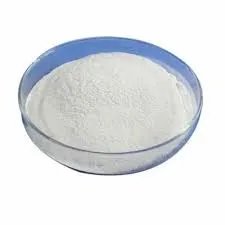
Dec . 20, 2024 22:07 Back to list
hpmc cellulose
Understanding HPMC Cellulose Properties, Applications, and Benefits
Hydroxypropyl Methylcellulose (HPMC) is a synthetic polymer derived from cellulose, a natural organic polymer found in the cell walls of plants. HPMC has gained widespread recognition and utilization across various industries due to its unique properties and versatility. This article explores the characteristics, applications, and advantages of HPMC cellulose, illustrating its importance in modern formulations.
Properties of HPMC Cellulose
HPMC is a white, odorless powder that is soluble in cold water but insoluble in hot water, showcasing a distinct behavior that aids in its application across different fields. The solubility of HPMC is highly dependent on its degree of substitution (the number of hydroxypropyl and methyl groups attached to the cellulose backbone), which affects its viscosity and gel-forming abilities. This parameter allows chemists and formulators to customize HPMC for specific applications, adjusting the viscosity and functional properties according to the needs of the end product.
One of the most significant properties of HPMC is its thickening ability. When dissolved in water, HPMC forms a gel-like structure that acts as a thickening agent, increasing the viscosity of various formulations. Additionally, HPMC exhibits excellent film-forming properties, which makes it suitable for creating protective barriers in numerous products. The polymer also possesses good stability, making it resistant to temperature changes and maintaining its properties over time.
Applications of HPMC Cellulose
HPMC cellulose finds application in various sectors, including pharmaceuticals, food and beverages, cosmetics, and construction.
hpmc cellulose

In the pharmaceutical sector, HPMC is used as a binder in tablet formulations, helping to hold the ingredients together while providing a controlled release of active pharmaceutical ingredients (APIs). Its ability to form gels helps to enhance the bioavailability of certain drugs. Moreover, HPMC is often employed in ophthalmic solutions as a lubricant, ensuring comfort in eye care products.
In the food industry, HPMC is recognized for its role as a food additive. It is used as a thickener, emulsifier, and stabilizer in various products, enhancing texture and mouthfeel while ensuring product consistency. Its ability to retain moisture makes it beneficial in baked goods, helping to keep products fresh over time.
The cosmetic industry also leverages the properties of HPMC, utilizing it in creams, lotions, and gels. It acts as a thickening agent, improving the texture and stability of these formulations. Additionally, HPMC is often found in hair care products, serving as a film-former that provides hold to hairstyles without causing stiffness.
In construction, HPMC is used in cement-based products such as tile adhesives and dry mix mortars. Its water-retention properties enable longer workability time, improving application ease and adhesive strength.
Benefits of HPMC Cellulose
The advantages of using HPMC cellulose are manifold. Firstly, it is non-toxic and approved for food and pharmaceutical applications, ensuring the safety of consumers. Secondly, its biodegradability aligns with the growing demand for sustainable and environmentally friendly materials. HPMC's versatility means that it can cater to various customer needs, making it an all-in-one solution for many industries. Furthermore, its ability to modify the flow properties and enhance stability of formulations significantly contributes to product performance and longevity.
In conclusion, HPMC cellulose stands out as a crucial ingredient in many formulations across diverse sectors due to its unique properties and adaptability. As industries continue to innovate and evolve, HPMC is likely to remain at the forefront of modern formulation science, helping to create high-quality products that meet the demands of consumers while ensuring safety and sustainability.
-
Versatile Hpmc Uses in Different Industries
NewsJun.19,2025
-
Redispersible Powder's Role in Enhancing Durability of Construction Products
NewsJun.19,2025
-
Hydroxyethyl Cellulose Applications Driving Green Industrial Processes
NewsJun.19,2025
-
Exploring Different Redispersible Polymer Powder
NewsJun.19,2025
-
Choosing the Right Mortar Bonding Agent
NewsJun.19,2025
-
Applications and Significance of China Hpmc in Modern Industries
NewsJun.19,2025







